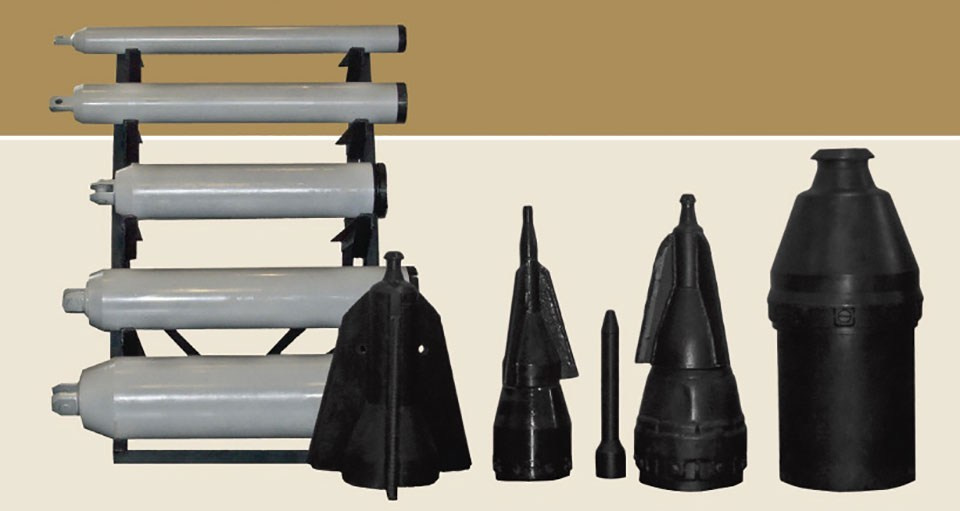Replacement of water disposal networks
The technology allows a trenchless method of replacing cast iron, ceramic, asbestos cement, concrete and reinforced concrete pipelines along the existing route. Equipment sets of nine standard sizes have been designed to replace pipelines with diameters from 100 to 600 mm. This technology allows replacing emergency pipelines with polyethylene pipelines with an increase in diameter by a factor of 1.5-2 times.
Principle of operation:
On the pneumatic hammer, located in the working pit, a ribbed expander is mounted, to the rear of which the sections of the new pipeline are connected. Cable winch with an anchor device located in the receiving well, passes through the replaced pipeline section and joins the front of the impactor. When the pneumatic hammer operates, the blow is transmitted to the expander, and through it to the old pipe. There is a destruction of the old pipe and expansion of the soil to the outer diameter of the expander. In the resulting well, when the pneumatic hammer moves, a new pipeline is tightened, which is extended by sections in the working well with the help of pipe spanners. Depending on the nature of the pipeline operation, the pulling method can be used. The technology allows to lay a polyethylene pipe of smaller diameter in the pipeline, without destroying it.


